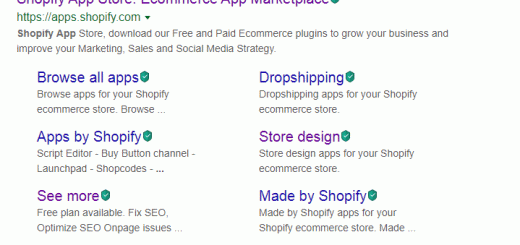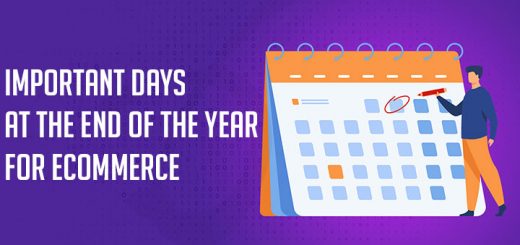7 Methods of Social Media Integration to Consider for Your eCommerce Store
You have a variety of options for integrating social media with your eCommerce website. Here are seven ways you can make them work together.
1. Show website visitors how to follow you
Possibly the most obvious and basic way to integrate social media into your website is to add social buttons that show visitors where to follow you. Include a button for every social channel you’re active on, then all visitors have to do is click on the button to find your profile on the site and follow you there.

You can choose from a number of free social button templates that use the most recognizable images for each social network, so visitors will know at a glance what each one is for. Put them in your header or footer, so they show up on every page of your website. That way every visitor that likes what they see on the site can find you on the social media network of their choice with one click.
2. Add social share buttons to website pages
When someone on your website likes what they see, they’re much more likely to share it with their own followers if there’s an easy way to do it instantly. If they have to open up the social media network and then copy and paste the link, that adds multiple steps to the sharing process. While technically those steps only add a few seconds, that’s all it takes to create a barrier to taking action.
Social share buttons remove those barriers completely. One click and your visitors can share the page with their networks. Add social share buttons to any page you think visitors may want to share, including your blog posts and product pages.

3. Provide pre-written updates visitors can share
Social share buttons are a start, but you can make them go even further by pre-writing the message that will post with it. That way they don’t have to do the work of writing something and you have more control over the message their followers will see.

4. Add a social feed to your home page
Adding a social feed to your home page gives visitors a taste of what they’ll see if they follow you. If you’re proud of the social media presence you’ve developed, it’s a great way to make the case for why your social accounts are worthy of a follow.
It’s also potentially a way to get social proof in front of your visitors. If your existing or potential customers are talking about you on social, you can create social feeds on your website based on the hashtag they use. Instead of showing your own social updates on the homepage, it will collect the social updates of your customers. That way, visitors see your products in practice and see evidence of how enthusiastic your customers are.
5. Promote branded hashtags on your site
Talking about yourself on social media is one thing. But customers sharing how they feel about your products on their own social feeds is much more powerful. You can encourage them to do so by creating a branded hashtag and urging customers to use it. Encourage them to share photos of them using the product or anecdotes about their experiences using it.

You can amplify what they share by collecting examples on your website (as with the social feeds just discussed), or by re-sharing them with your followers.
Encouraging user generated content is a smart tactic for both gaining more content for your website and feeds, and for getting loads of examples of social proof and engagement at the same time. And customers are often happy to be featured on a brand’s website or feed, since you’re giving them a little visibility boost in the process.
6. Provide rewards for social interaction
If you have a rewards program, use it to encourage more social interactions. Customers that join your loyalty program are those most likely to be enthusiastic about your brand and product. That means they’ll be some of your best brand enthusiasts. Reward customers with additional points for following you on social media and/or sharing mentions of your brand.

Providing rewards points for social actions gives them an extra nudge to follow you on their favorite social sites, and talk about you to their followers. That deepens their connection to your brand and increases the likelihood that they’ll drive referrals your way—both results that are great for any eCommerce business.
7. Promote your website on social media
Most of these suggestions have been focused on how to promote your social media profiles on your website, but integrating the two channels goes both ways. Your social feeds should serve as a tool for driving traffic back to your website.
Use your social accounts to share the content you create and publish on the site. Share new deals and promotions with your followers. Announce new products across all your social feeds. And share any important brand updates on each social profile you manage.
The people that follow you on social media care about your brand. They’re precisely the people that appreciate your content, want to know about your new products, and will take advantage of your sales. Social media is good for promoting your website, just as your website is good for encouraging people to follow you on your social accounts.
Source: Hostgator’s Blog








